ECOLEADERS’ NEWSLETTER
NEWS OF THE MONTH

GLOBAL + LOCAL NEWS
Melting of Glaciers in Antarctica, climate change effects on the Israel-Palestine conflicts, coral bleaching, a discovery of a new plant- learn more!
Renewable energy is a growing sector, as the world shifts away from fossil fuels With numerous sources al
SKUNKS ON CAMPUS
Have you or your friend recently had a run-in with a skunk at night? Notice any pungent smells around campus? Well, skunks are more than just odoriferous nocturnal critters; they play a vital role in our environment and teach a lesson about adaptability in the 21st century
What do Ecoleaders do? Learn about our efforts to enhance school sustainability and how we represent the student voice against climate change Each month, discover our recent initiatives and future plans!
WHAT’S UP WITH THE ECOLEADERS?
Each month, we'll answer NMH community questions and showcase a sustainability role model at NMH!
RENEWABLE TECNOLOGIES?
Northfield Mount Hermon October 2023
Q&A+SUSTAINABILITY SPOTLIGHT
Photo by Lindsey Topham
GLOBAL NEWS
by Charlotte Relyea-Strawn
SCAN THE QR CODES TO LEARN MORE!
ANTARCTIC MELTING LOOKS CERTAIN


The enormous glaciers that cover Antarctica are rapidly melting, which could lead to rising sea levels all over the world. Now researches in Britain have declared that staying under 1.5 degrees celsius which is the goal of the Paris Agreement, probably won’t be achieved.
This along with other things adding to climate change, like rising carbon emissions, seem invisible and unimportant, but end up being the leading effects of global warming and must be taken seriously.

HEAT-INDUCED CORAL BLEACHING

Climate change and the global health crisis are interconnected With millions dying each year from air pollution and a rapid increase in waterborne diseases due to excess flooding and warmer temperatures, global warming directly affects human health As habitats with favorable living conditions shrink, humans and wildlife come into closer contact, facilitating the spread of vector-borne diseases and viruses like COVID-19
A NEW PLANT IN AFRICA MIGHT BE A SOLUTION TO CLIMATE CHANGE
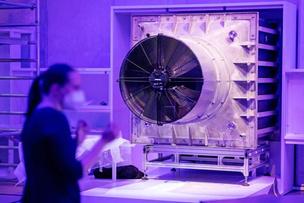
Tens of thousands of protestors marched through the streets of New York City on September 17-18th, following a series of protests in other countries such as Germany, South Korea, and India This NYC-based protest aimed to halt new oil and gas drilling, delivering a message specifically to President Biden and other U N leaders, asserting that their actions against climate change are insufficient to mitigate global temperature rise and prevent a world catastrophe If the president and others seek the people's support, they must heed our voices.



HOW THE ISRAEL PALESTINE CONFLICT IS AFFECTING CLIMATE CHANGE
“Oil prices could surge Disagreements between nations could worsen The conflict complicates already fragile global diplomacy ahead of crucial climate talks ”
While there are global efforts to talk about climate change, this is hidden behind the distrust throughout countries In the Middle East oil and gas prices have risen to help the wars, and they have forgotten how this is affecting climate change Israel and Hamas are the centers of an energy-rich region
“It tempts countries to secure their supplies of oil and gas rather than transitioning away from them, even after the hottest summer on record ” In the next weeks if the conflict worsens it will probably threaten global agreements
1
NASA, via Associated Press
Andrew Ibarra / NOAA via AP
Photo by NPR
Photo by United Nation
LOCAL NEWS
by Charlotte Relyea-Strawn
When Rebecca Todd attended Dartmouth College, at the end of the year she and her roommate decided to paddle home on the Connecticut River fueling her love for paddling and the Connecticut River.
Her new job is the Connecticut River Conservancy’s new executive director, which she began working there on October 10 She says it is her “professional excuse” for working on the Connecticut River She wants to address her coworkers' concerns about the watershed making sure to carry out ideas “equitably and professionally ”
While the Connecticut River Conservancy will continue it’s usual work of replacing dams getting rid of invasive species and planting native vegetation and other things it will also work to addressing accessibility issues and access to the river.
“The big issue is, really, what the heck are we going to do about global climate change?,”-Rebecca Todd


3
Photo by Packaging Strategies
THE RISE OF RENEWABLES
by Priya Chatterjee
The utilization of renewable energy sources, such as wind, solar, and hydro, has a history dating back centuries These sources have been vital throughout history, and they are experiencing a renaissance in recent years This resurgence is due to the escalating cost of fossil fuels and the environmental issues stemming from their extraction and consumption Renewable energy, with its inexhaustible, clean, and locally available nature, offers an array of benefits. It complements various sources, facilitating integration between them.
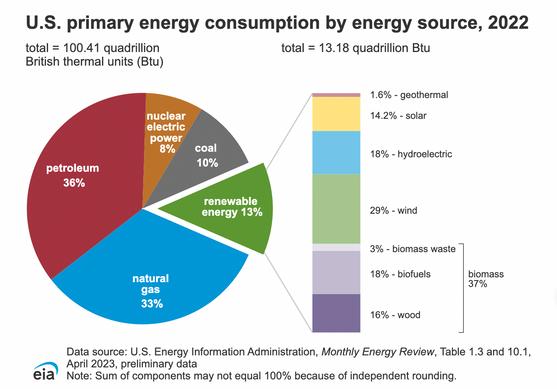
In 2022, renewable energy provided about 13% of total U S energy consumption The electric power sector accounted for approximately 61% of the total U.S. renewable energy consumption in the same year. Remarkably, about 21% of the total U.S. electricity generation was derived from renewable energy sources. This signifies a pivotal shift in energy consumption patterns, as the world increasingly recognizes the benefits of harnessing nature's gifts to power our lives.
There are five primary types of renewable energy:
SolarEnergy:
Thesun,anabundantandfreelyavailableenergyresource,has enormouspotentialforrenewableenergy.Solarenergyisgenerated fromthesun'sradiationandcanbeharnessedintwoprimaryways:
a.SolarPhotovoltaic(PV)Systems:Solarpanelscapturesunlight andconvertitintoelectricity Thistechnologyiscommonlyusedin residentialandcommercialsettings,aswellasforpoweringremote locations.
bConcentratedSolarPower(CSP):CSPsystemsusemirrorsor lensestoconcentratesunlightontoareceiver,whereitisconvertedinto high-temperatureheat,whichcanthengenerateelectricity.CSPis typicallyusedinutility-scalepowerplants
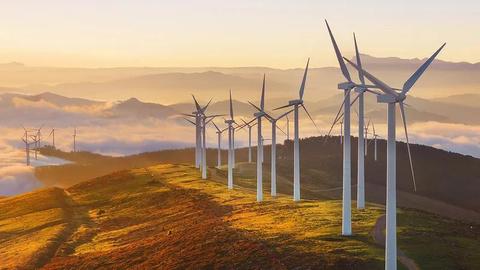
WindEnergy:

Windpowerstandsoutasthelargestproducerofrenewableelectricityinboth theUKandtheUSOnshoreandoffshorewindfarmsgenerateelectricityby capturingthekineticenergyofmovingairWindturbines,whetheronlandor atsea,playacrucialroleinthisprocess.Theyconvertthekineticenergyof thespinningbladesintoelectricenergybyturningadriveshaftandgearbox connectedtoagenerator Thiselectricityisthentransformedintohigher voltagesandfedintothenationalgrid.
2
Photo by Britannica
Photo by MIT Energy Initiative
HydroelectricPower:
Hydroelectricpowerreliesonthemovementofwaterto generateelectricity Itisoneoftheoldestandmost widelyusedformsofrenewableenergy.Damsand turbinesareusedtoconverttheenergyofflowing waterintoelectricity
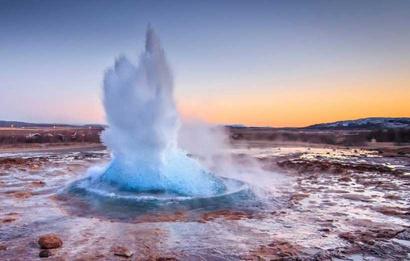
BiofuelEnergy:
Biofuels are liquid or gaseous fuels made from biologicalmaterials,primarilycropsandalgae.They arecommonlyusedinthetransportationsectorasan alternativetofossilfuels,offeringlowergreenhouse gasemissions.
GeothermalEnergy:
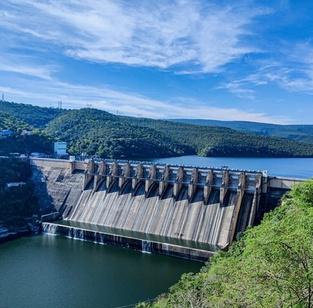
GeothermalenergytapsintotheEarth'sthermalenergy.Itis generated by extracting heat from geothermal reservoirs, whichcanbenaturallyhotandpermeableorimprovedwith hydraulicstimulation.Thistechnology,whichhasbeenin operationforoveracentury,deliverselectricityreliablyfrom hydrothermalreservoirs.
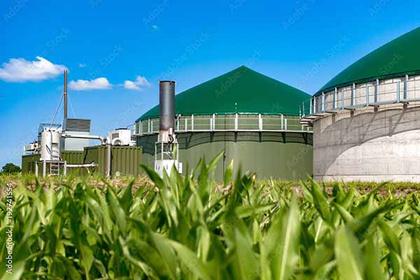
The mix of these renewable sources can be tailored to maximize efficiency and minimize environmental impact In contrast to these renewable sources are non-renewable energy sources most notably fossil fuels such as coal, natural gas, and oil While occurring naturally, these sources are finite and often take hundreds of thousands of years to form. They require extraction and combustion to generate the energy, emitting harmful greenhouse gases like CO2 in the process.
There are many benefits to renewable energy that extend to the economy, environment, national security, and human health. Embracing renewable energy brings:
Grid Reliability: Renewable energy enhances the reliability and resilience of the U.S. national power grid.
Job Creation: The renewable energy sector has become a significant source of job opportunities, benefiting the economy and local communities
Reduced Carbon Emissions: Renewable energy significantly reduces carbon emissions and air pollution associated with energy production, contributing to a cleaner environment
Energy Independence: By reducing reliance on fossil fuels, renewable energy sources enhance energy independence for nations
Cost-Competitive: Many renewable energy sources are now cost-competitive with traditional energy sources, making the transition to cleaner energy economically viable
Expanded Access: Renewable energy can provide clean power to non-grid-connected, remote, coastal, and islanded communities, ensuring energy access for all
In 2022, solar and wind energy alone were projected to add more than 60% of utility-scale generating capacity to the U.S. power grid, with 46% attributed to solar and 17% to wind. The U.S. boasts abundant renewable energy resources, with an available supply of approximately 100 times greater than the nation's annual electricity consumption. The potential for renewable energy in the United States is boundless.
2
1. 2 3 4 5 6
Photo by Tara Energy
Photo by JM Engineering
Photo by The Conversation
SKUNKS ON CAMPUS
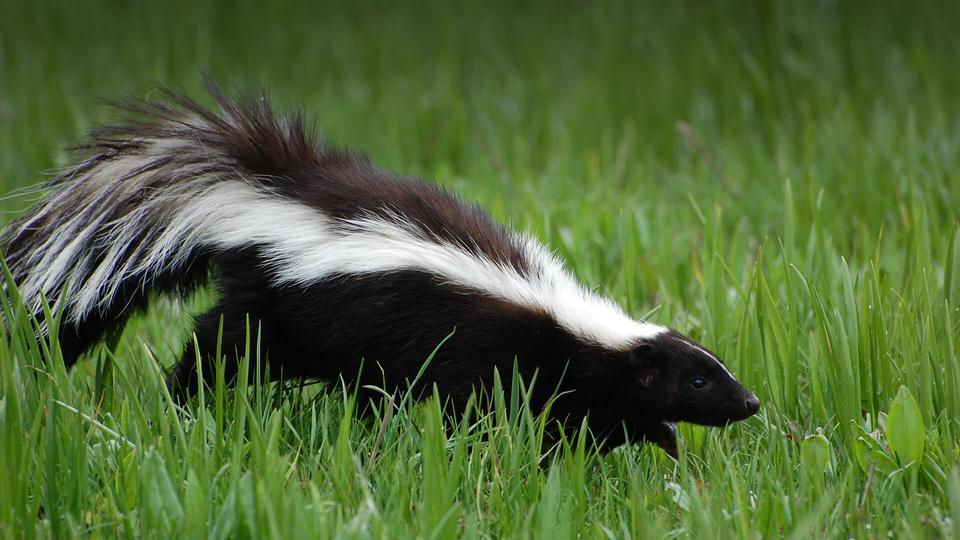
Research conducted by the New Hampshire Agricultural Experiment Station (NHAES) shines a spotlight on the thriving skunk population and the critical role they play in maintaining the delicate balance of nature NHAES scientist Rem Moll, working in collaboration with researchers from the University of Illinois and the University of Utah, recently published their findings in the Global Ecology and Conservation journal. Their research focuses on developing a model to determine regional skunk resilience across the United States. “Striped skunks are doing well wherever there's abundant food that supports their omnivorous diet, as well as in developed places where structures provide places to live,” explains Moll. “The presence of food and shelter seems to really buffer skunks from any human-related negative impacts, like pest control and vehicle collisions.”
The skunk benefits from their coexistence with humans while simultaneously enduring the challenges that it brings. In some areas, human interventions and vehicular accidents are the leading causes of skunk fatalities, a trend that’s not unique just to skunks, but also found among other local animals like coyotes and raccoons “It's really remarkable how skunks are thriving at broad scales despite sometimes intense human persecution and lethal pest control,” Moll added “They seem to occupy a unique ecological niche where, so long as food and shelter are present, they can coexist and even thrive alongside humans despite the associated risks ”
Not only resilient, but they are extremely adept at controlling pest populations, dispersing seeds, and aiding in the growth of various plants Their diverse diet includes insects, small mammals, fruits, and even fungi-- it’s like having tiny, gardeners running around campus That being said, what's truly fascinating about skunks is that they exemplify the species that are likely to flourish in the 21st century In a world marked by changing landscapes due to urbanization and climate change, skunks show that certain ecological traits can help wildlife persist in human-modified environments.
While most folks might think of skunks as suburban pests, New England’s native skunk species, the striped skunk, Mephitis Mephitis, has an important role in local ecosystems. Moreover, these captivating creatures are sending an important message about wildlife's resilience in the face of urbanization and climate change. So, next time you are walking through campus and catch a glimpse of a black-and-white fluffball waddling by, remember that it's not just a skunk-- it's a symbol of nature’s resilience and a reminder that even in the face of adversity, our ecosystem continues to thrive
4
Photo by Wallpaper Flare
Photo by San Diego Zoo by Sailor Cohen
WHAT’S UP WITH THE ECOLEADERS?
SO…WHAT DO THE ECOLEADERS DO ANYWAY?
by Priya Chatterjee
As we continue our journey toward a greener campus and more sustainable world, here's a glimpse of what's been happeningandwhat'scomingupintheworldofEcoleaders
WeeklyMeetingsandSpecialGuests
Wehavebeenmeetingregularlytodiscussourongoinginitiativesandsetthecourseforoursemester.Thesesessions aren't just about brainstorming; we've had some fantastic guests join us, such as Lospher from NMH TV, who shared insights on how we can integrate Ecoleader news into your daily student life. We've also had the privilege of engaging withPeterSniffen,NMH'sSustainabilityDirector,wherewe'vehadtheopportunitytodiscussNMH'ssustainabilityreport andexplorewaystoalignourefforts.
CJC!
WerecentlyhostedthefirstCJCmeetingoftheyear,whereweintroducedourgoalsandtheresourcesatyourdisposal This open discussion was the perfect opportunity to explore how you can get involved in climate activism on and off campus Our upcoming CJC activities will span presentations on campus sustainability, climate policies, ecology, and more We're also excited to screen documentaries and lend our voices to writing legislative letters Nature enthusiasts, staytunedforournaturewalks!
UpcomingEvents
OnOctober29th,EcoleadersandCJCmemberswillhavetheincredibleopportunitytoattendTheMassachusettsYouth ClimateCoalitionsummithostedbyMIT.Thissummitwillincludeworkshopsonclimatejustice,ecology,legislation,and muchmore We'llabsorbtheseinsightsandincorporatethemintoourworkhereatNMH Anothereventonthehorizonis theYCANsummit,wherewe'llpartakeinempoweringworkshopstodriveourmissionforward.
CommunityEngagement
Ecoleadersandvolunteerstudentshavebeenactiveparticipantsinourlocalcommunityaswell Werecentlylentahand at the Scarecrow in the Park event, where we focused on monitoring trash, recycling, and compost bins Being environmentallyresponsibleextendsbeyondthecampus,andwe'reproudtosupportourlocalinitiatives.
PICTURES?
We aim to stay informed, engaged, and dedicated to our mission This newsletter is a reflection of our commitment to spreading knowledge and raising awareness about the environment Stay tuned for more updates and exciting activities from Ecoleaders!
5
Q&A + SUSTAINABILITY SPOTLIGHT
by Payton Bonang
1) WHAT EVEN IS AN ECOLEADER?
It is a student leadership position where we promote sustainable practices on campus by educating and organizing activities for the NMH community Our group consists of eleven members: Maya Baudrand, Payton Bonang, Priya Chatterjee, Sailor Cohen, Kelvin Cheung, Wilson Cheung, Jane Namusisi, Jasper Neff, Charlotte Relyea-Strawn, Amy Vongvasin, and Kitty Zhang, all led by the wonderful Skylar McAlpin.
2) HOW CAN I BRING MY IDEAS TO THE ECOLEADERS?
You can reach out to our faculty leader Skylar McAlpin at smcalpin@nmhschool org or to ecoleaders@nmhschool org
3) HOW CAN I GET INVOLVED?
Join the Climate Justice Coalition (CJC) that’s run by the Ecoleaders to regularly meet with peers of similar interests in the environment. There also are events such as the Green Cup Challenge to get the whole student body involved in sustainable practices. You also can read our monthly newsletter (which you currently are!!) and reach out to us with any questions or ideas you have.
4) ARE THE ECOLEADERS GOING TO BRING US ANY FUN EVENTS THIS YEAR?
YES! Make sure you check the weekend scoop for any weekend activities and get excited for bigger events like the Green Cup Challenge and sustainable fashion show!
Jake Marley is an alum of NMH, class of 2013. He is a perfect example of taking what he learned about sustainability at NMH and sharing it with the world. He works at Joe Czaijowski agrivoltaics farm located in Hadley Massachusetts Agrivoltaics is the use of land for both agriculture and solar energy generation His farm provides food sources and affordable solar energy
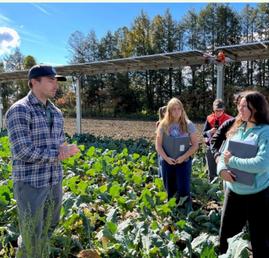

This project of having community-owned solar and solar equity is a fight between the environment and authorities Jake Marley is part of this fight to help low-income families to have solar panels Read more about solar in marginalized communities hereJake Marley came to NMH to talk with the students part of the farm classes. The solar panel on the farm was donated by his dad.
Please reach out to any eco leaders if you have any suggestions for sustainability spotlights. We always appreciate your suggestions and feedback! Keep being an active member of our NMH’s mission to be more sustainable on and off campus!
6
SUSTAINABILITY SPOTLIGHT:
NMH Alumni Jake Marley ‘13




7 REACH US AT LET’S WORK TOGETHER TOWARDS A MORE SUSTAINBLE FUTURE ecoleaders@nmhschool org SUBMIT ANY QUESTIONS, IDEAS, OR CONCERNS!!!
REFERENCES
Photo by Krystal Wang
Layout by Kitty Zhang























